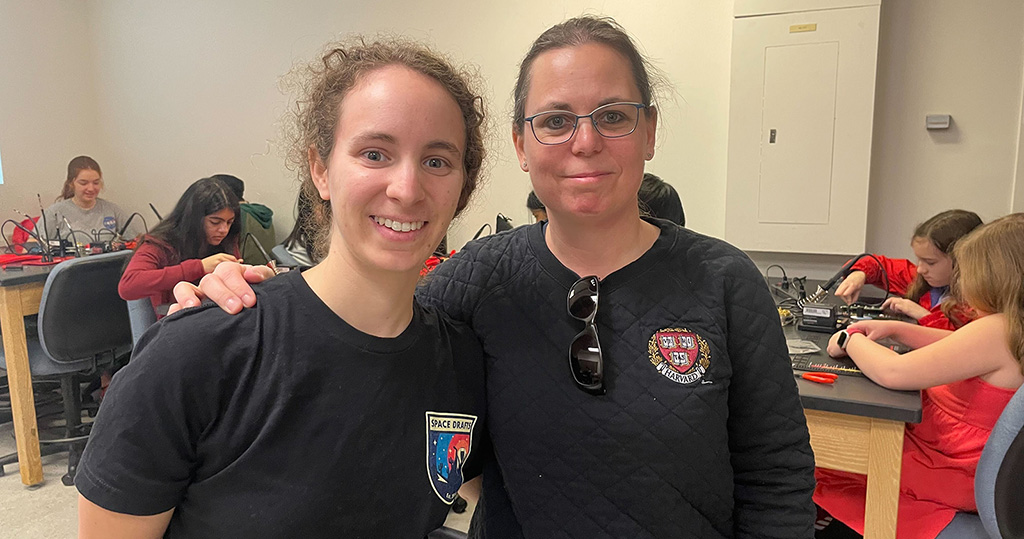
Interview: Allyson Bieryla and Sóley Hyman of the LightSound Project
Cosmic events like total solar eclipses are usually described as visual experiences. People recount seeing the sun’s outermost layers, beads of sunlight peaking from behind the moon and, of course, day seemingly turning into night. But the experience of an eclipse is about more than just the visuals. So how can we make sure that all people, including those who are visually impaired, have a memorable eclipse experience?
Allyson Bieryla and Sóley Hyman of the LightSound Project are doing just this through their device, LightSound, which measures light intensity changes during an eclipse and sonifies them by mapping them to a musical tone — all in real time. Through this sonification, people, including those visually impaired or blind, can experience an eclipse in a unique way, allowing them to listen to the changes in light that occur before, during and after totality.
Bieryla and Hyman are hard at work ensuring that as many devices as possible can be built prior to April 8, the day of the eclipse, all while doing their day jobs. Bieryla is an astronomy lab and telescope manager at Harvard University and Hyman is a Ph.D. student at the University of Arizona. They’re also enlisting the help of community members around the United States to help construct the devices through building workshops. Through their publicly accessible project, you can even make your own LightSound device.
We recently spoke with Bieryla and Hyman about their work. The transcript below has been edited for brevity and clarity.
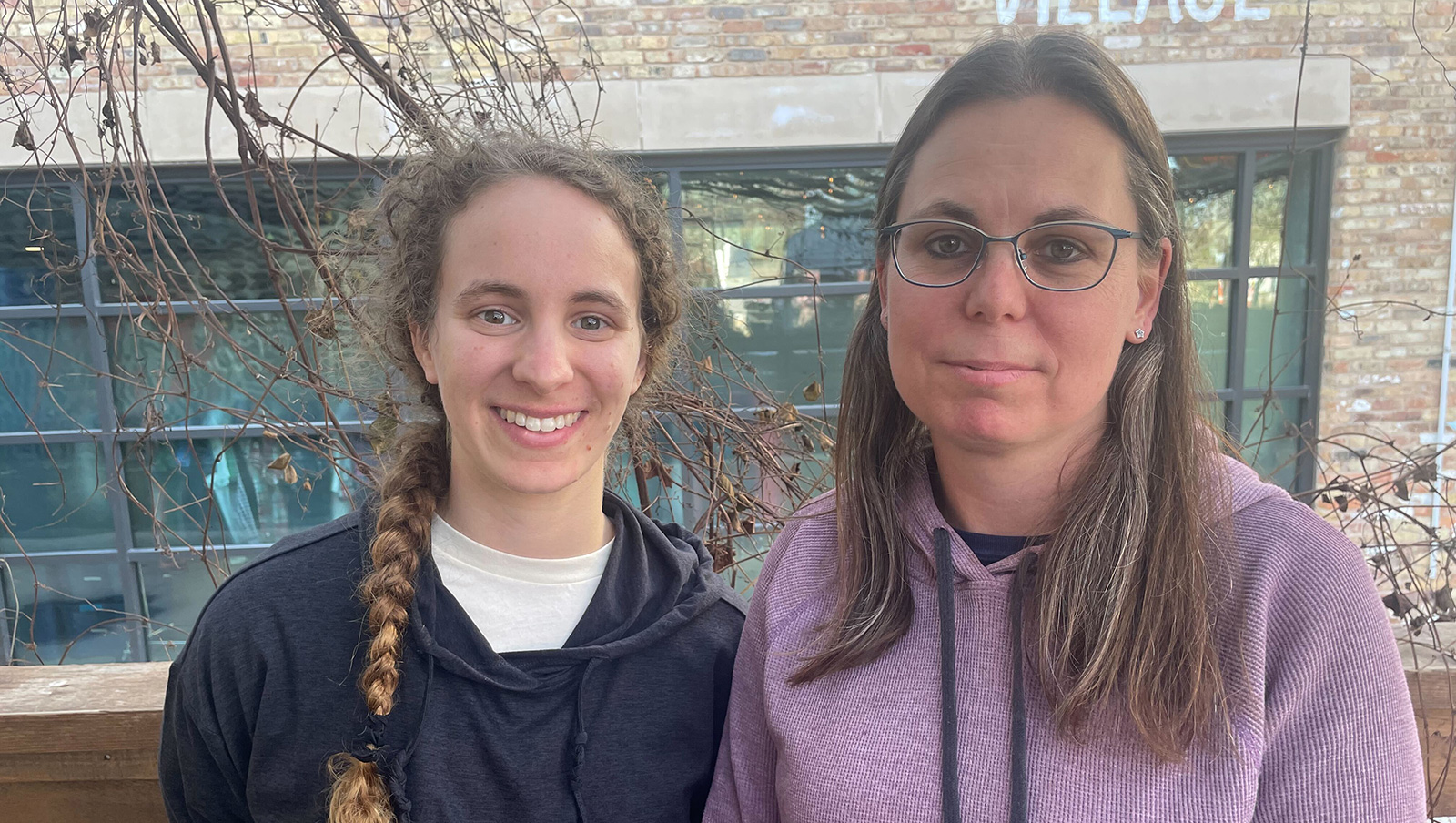
Hi, Allyson and Sóley! Can you tell us a bit about yourselves?
Allyson Bieryla: I am an astronomer at the Center for Astrophysics | Harvard and Smithsonian. I manage the lab and telescopes that we use for undergraduate teaching, so I run all the lab components in courses, working closely with undergrads. I also do exoplanet research, and I’m interested in planets around other stars. And of course I’m interested in solar eclipses since LightSound has come to be.
Sóley Hyman: I’m a fourth year Ph.D. student at Steward Observatory at the University of Arizona in Tucson. I did my undergrad at Harvard, and that’s how I got involved with LightSound. I am also a musician on the side, and so that music and astronomy combination gave me a really good set of skills for working on LightSound with Allyson. On the research side, I study galaxy evolution.
What’s your favorite memory of the sun?
Allyson: My easy favorite one is my first total solar eclipse. It blew my mind. I went into it not fully knowing what to expect. But really, it was profoundly impactful on many different levels in terms of the emotions that it draws out of people, and it’s also visually stunning. It was a community experience where I was in Jackson Hole, Wyoming. We took our students on a senior trip, and that year it happened during the week of that eclipse, so we decided to go to Yellowstone National Park and the Grand Tetons to experience the eclipse. We teamed up with Wyoming Stargazing, an education organization that does outreach, and the students volunteered to run their solar telescopes. We had our first version of the LightSound there.
Sóley: The 2017 eclipse was probably my most impactful moment with the sun. I was home for the summer in St. Louis, which is where I’m from, and we had friends who lived right on the centerline of the path of totality, so we went out there. My dad — who’s always had a huge impact on my curiosity for science and space — and I had been counting down for nine years, because we had just missed the previous eclipse while traveling. I remember looking online afterward and being like, “Oh my gosh! There’s going to be a solar eclipse when I’m in college, going right through our state.” So in 2017 we had already been counting down for nine years. It’s such an incredible moment, because there are so many things that happen in the brief minutes of totality. You understand why people chase eclipses all around the globe, because it’s so quick and it’s so incredible that you just need to experience it again to understand what’s happening. I think it was the most spectacular thing for me. I remember saying to my parents after the 2017 totality, “Well, that might have just made me an astronomer.” And look at me now: I’m doing galaxy science.
Can you tell us about LightSound?
Allyson: It started around the last solar eclipse in the U.S. in 2017. I mentioned I manage the lab and telescopes that we use for teaching at Harvard, and so I was thinking about broader accessibility of our labs, and how to make sure that they could be accessible to all of our students. In thinking about that, somebody mentioned that I should talk with Wanda Díaz-Merced, who was doing a postdoc here at the Center for Astrophysics. Wanda is a blind astronomer and is a pioneer for sonification — which is taking data and converting it to sound as an output. We had a conversation about accessibility and her suggestions about the lab. But then, knowing that the eclipse was coming up and that we were taking these students on their senior trip, she asked, “What are you going to do to make sure that this is accessible to the broader community?” It’s interesting, because previously I hadn’t been thinking about or had [any] experience with sonification. I was thinking more about tactile and Braille-type images, so this was very new to me. But we came up with this idea of developing a tool that could be accessible to nonsighted groups worldwide and would convert light to sound.
We brought in Daniel Davis, who is the director of lecture demonstrations at Harvard. He built the first prototype for this device. It was just one additional way that people can experience an eclipse, and it doesn’t have to just be nonsighted individuals; it can be anyone.
How does LightSound work?
Allyson: The LightSound has a very high dynamic range light sensor, so it collects the light intensity or light brightness during an eclipse. That light intensity goes through a microcontroller board, where a simple coding program in the board takes the light intensity data that comes in, and then feeds it through to a MIDI board, which maps it to instruments. Then it’s output through an audio jack for someone to listen to. Basically it’s based on the intensity of light. Also, that microcontroller board connects to a computer where you can collect the data or plot the data in real time.
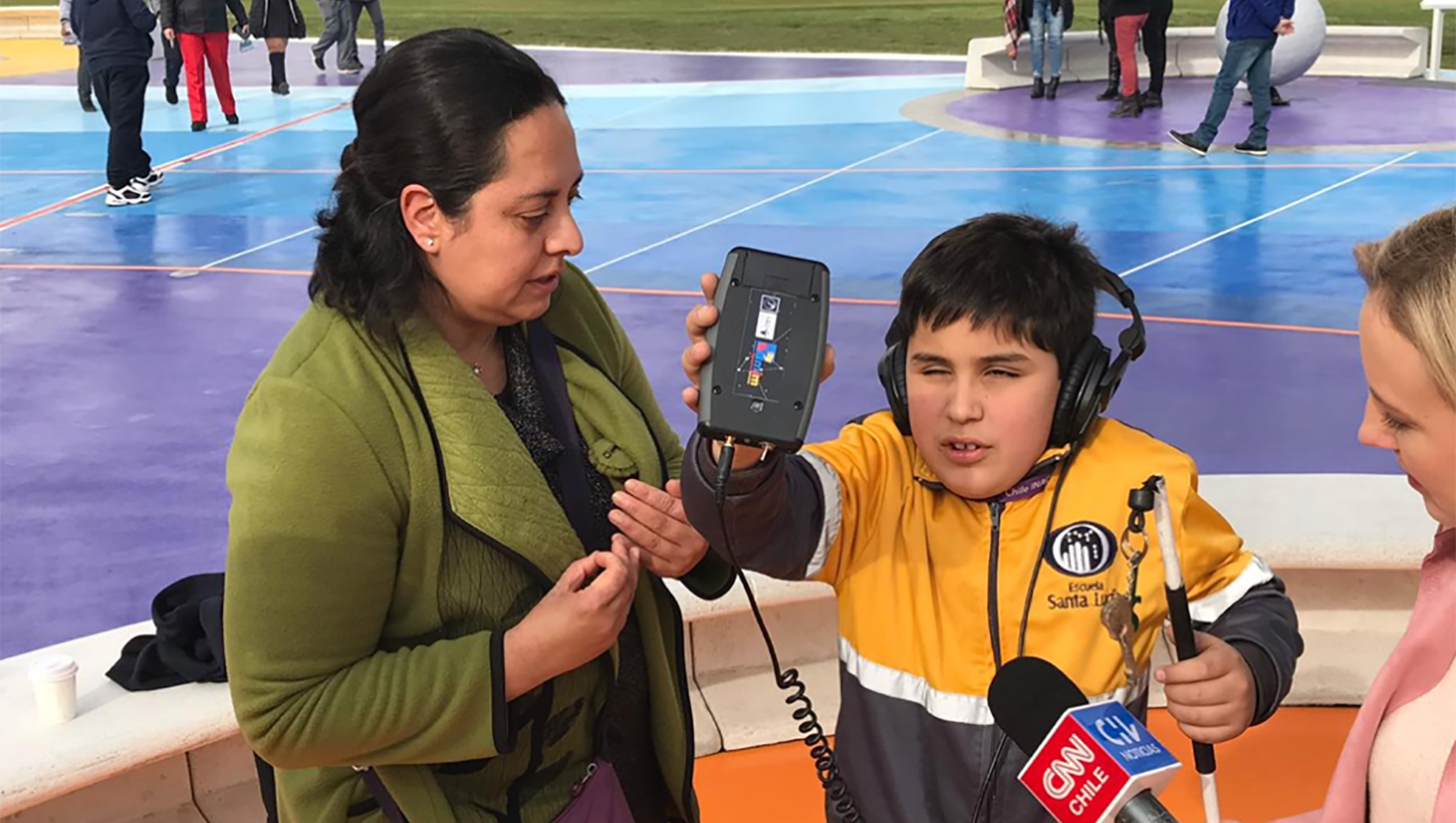
What are you able to do with some of that data?
Sóley: One of the things we do prior to the eclipse is distribute a template observing form to LightSound users to guide them through the experience. It includes questions like “Where are you positioned?” “What time did you start taking data?” “What were the weather conditions like at the beginning and end of your observations?” The idea is that people can take that and upload that information on an online form so that we can poll the users and collect data, like where people were and what their experiences were using the devices.
Allyson: We’ve also been very careful about trying to make LightSound about science, and make it clear that the data can be used in a real, meaningful way to take measurements. You can learn about the duration or how much the light has changed during the eclipse, and we can also use this data to teach. We’ve talked about developing lesson plans, or just giving teachers tools and different ways to talk about eclipses and teach them in a classroom. When you’re talking about eclipses, you can demonstrate what happens when something blocks light, whether it’s a planet or whether it’s the moon blocking the sun during an eclipse.
It can also be used as an artistic interpretation of an eclipse. I’ve already talked to people who are interested in making art with the data. So we’d like to build this repository where people can give us their data, and then the community can access it. I’m curious, just as always with this project, what other cool ideas people come up with.
What do you notice when people use the LightSound? And from your experience, what does it look like for you to see somebody else use it?
Allyson: What drives this project is the feedback and the positivity that we get from the community. It’s a really rewarding project, and I think that with every eclipse, we keep learning things. I think the 2019 and 2020 eclipses in Chile and Argentina were a big push forward, because it was where we started to get more than just a couple of LightSounds out into the world.
Unfortunately, neither Sóley nor I were able to go to see the eclipse in 2019, and in 2020 I was planning to go, but of course COVID happened, so I didn’t make it there. But we got lots of pictures and lots of data. It was interesting to see how people used them. One thing about the LightSound is that the audio jack can connect to headphones. Some people prefer headphones so they can experience an eclipse on their own. But it was also neat to see that some groups would take a device and hook it up to a speaker and have a group listening section. We got one of my favorite photos from La Portada stadium in La Serena, Chile, where there’s thousands of people in the stadium, but they have this one subsection for a group of people listening to the eclipse. But they’re also in a community of people still experiencing the full event.
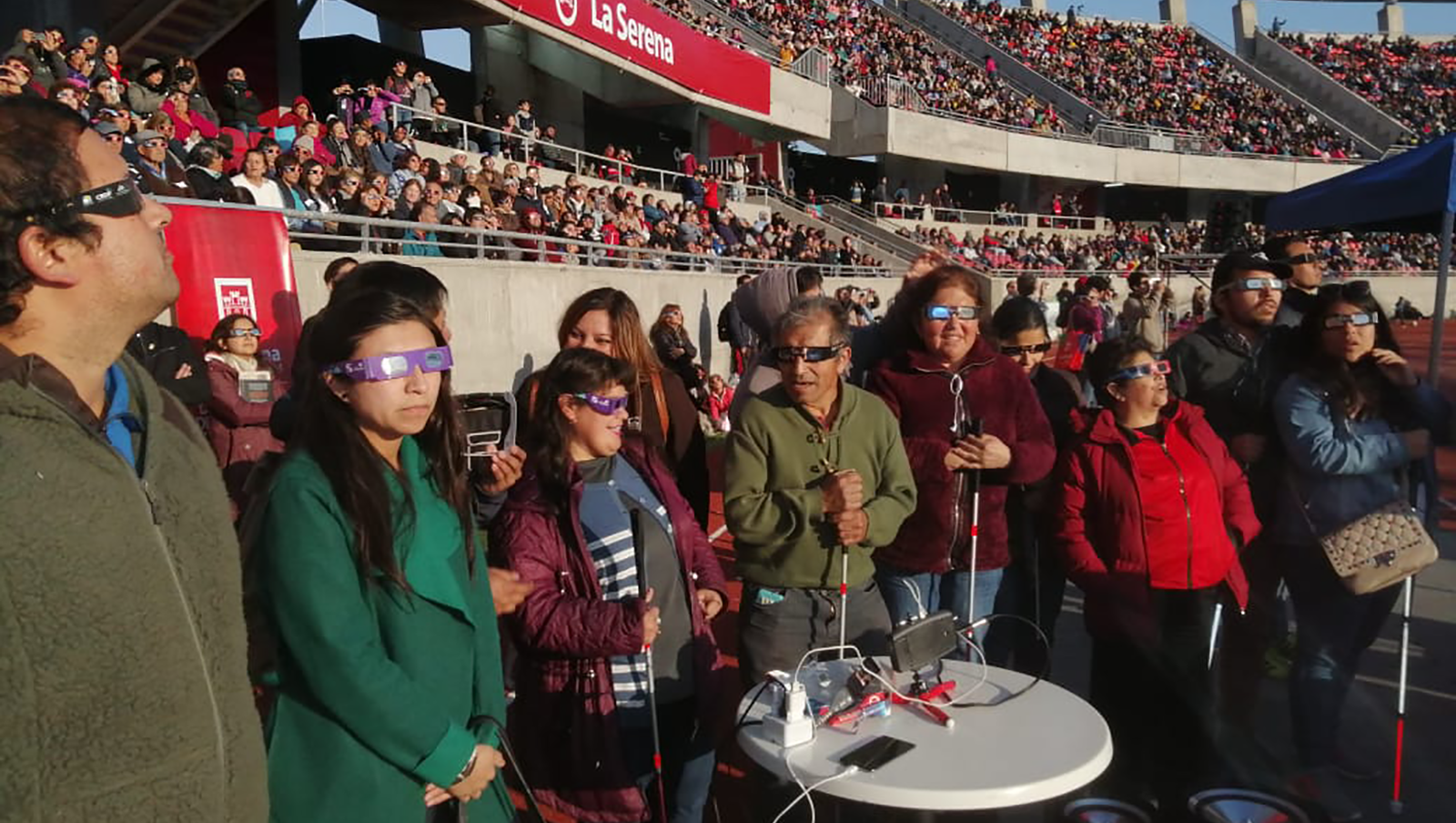
What does seeing LightSound in action bring up for you, Sóley?
Sóley: There are a couple aspects of it. I think one of the most rewarding feelings was when we first mailed the devices to Chile, because Allyson and I built half of those devices. Reading some of the feedback and news stories of people who had used it was impactful. There were stories of someone who had lost their sight at some point in their life describing the experience, and there were a couple of quotes from someone who had always been blind, and just knowing that LightSound has made a difference for someone is why we do this. It is exhausting running a project like this, because it’s just me and Allyson pretty much in the day-to-day. Wanda, of course, has been a great collaborator for things, and Daniel has been instrumental in helping troubleshoot and develop the device. Also, our engineer, Elliot Richards, developed the printed circuit board version, which eliminated the need for wires and has been a huge step forward for actually being able to produce a lot of these devices. It’s a lot of work, but seeing the reactions from people using it makes it all worth it.
I think one of the other really exciting things has been doing workshops with people and building the devices, because it doesn’t require high levels of expertise and soldering. It’s been really rewarding to teach people, and especially underrepresented groups, how to solder. It’s exciting to see in the span of a couple of hours someone going from never having held a solder iron before to feeling empowered and wanting to teach others.
With the eclipse soon approaching, what are some of the partnerships you’ve built to help continue to get the LightSound devices out into the world?
Allyson: We’re really excited to build a partnership with the American Printing House for the Blind (APH). It’s still very new, but our plan is to work with them to identify all the schools for the blind across the path of totality, and then reach out to them and make sure that they’re aware of the devices. We’re identifying them now, and in the coming months, we’re going to be working with APH to get the LightSounds to those schools. In terms of building the devices, we’re hosting a two-day workshop at UT-Austin, where we’re going to build a whole bunch of devices and mail them out.
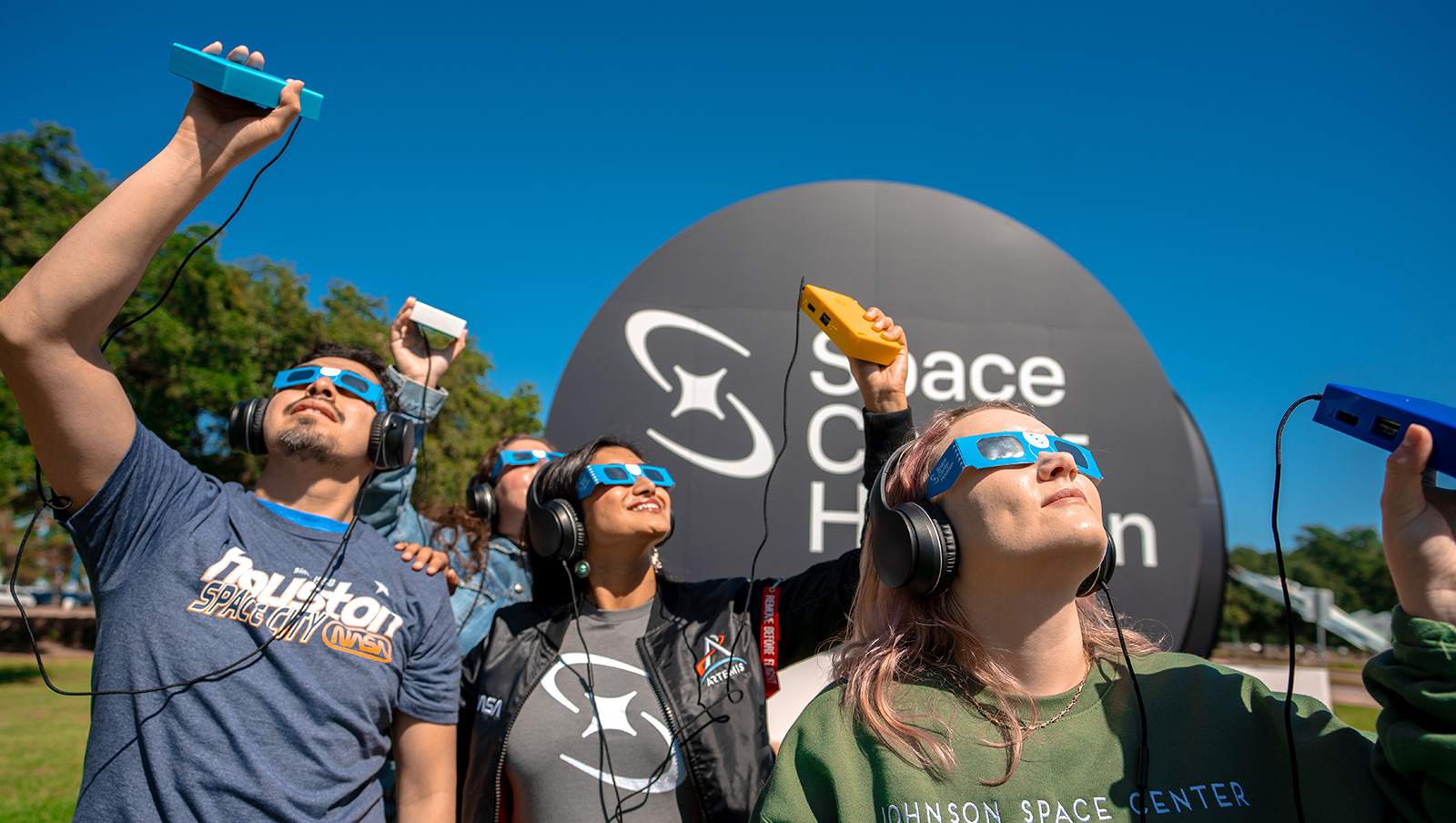
What do you feel is unique about the 2024 eclipse and LightSound’s role in it?
Sóley: When Allyson and I talk about our experiences with an eclipse, people generally refer to them as visual events. So I think raising awareness that there are multiple ways to experience something is important. One of the really neat things about the LightSound is that it sonifies the changing brightness in real time. So it’s not like you’ve recorded what the eclipse is going to sound like. The idea is that you’re hearing it at the time that it’s happening, with everyone else. So the LightSound helps make events more accessible and more inclusive.
Allyson: In general, I’m just excited for another eclipse, because 2017 was incredible. In terms of the project, I am in awe of how much it’s grown in the last five years. We’re building probably 750+ devices for this year’s eclipse, compared with the less than a hundred that we did in 2019. It just keeps growing. I’m most proud of the community aspect that we’ve built, especially through the building workshops. The amount of people who reach out almost daily now wanting kits so they can build LightSounds in their schools makes me really excited and proud, because so much of this, like Sóley said, is bringing awareness that simple things can be done to make sure that accessibility isn’t an afterthought, and I think LightSound is just one example. The best and most unique thing about this project is that it keeps growing in ways that we never thought of in the beginning.
What are you guys looking forward to in the months leading up to April?
Allyson: We’re going to be running that workshop at UT-Austin in January where we’re going to aim to build 300 devices. We also have some funding through the National Science Foundation, so we’re going to be building another 250 with them. We’ll also be doing a lot of demos with Simons Foundation partners that are part of the In the Path of Totality initiative, like the Thinkery in Austin, and at the Flatiron Institute. So we have plenty of things to do, but I think our main focus right now is just making sure we get these devices built.
Sóley: I think the exciting and a little bit overwhelming thing is that all of the requests for people wanting the LightSound have been pretty much just by word of mouth. We haven’t really advertised LightSound at all, which is exciting and terrifying because we’re working to build devices as fast as we can with workshops. But that’s definitely been neat.
What is the day going to look like for you two?
Allyson: I finally committed to going to Hot Springs, Arkansas. We haven’t committed to the exact location, but I think I would like to be in the national park there, so I’m excited about that for me. But also, I think, day of, it’s almost like, “Take a deep breath; you did everything you could — just enjoy it.”
Sóley: I’m going to be with my family. We haven’t really figured out where yet, but depending on what we’re doing and where we’re going, I’d like to use a LightSound for the first time in person at an eclipse and be able to collect data.
Thank you, Allyson and Sóley!
Allyson and Sóley: Thank you!